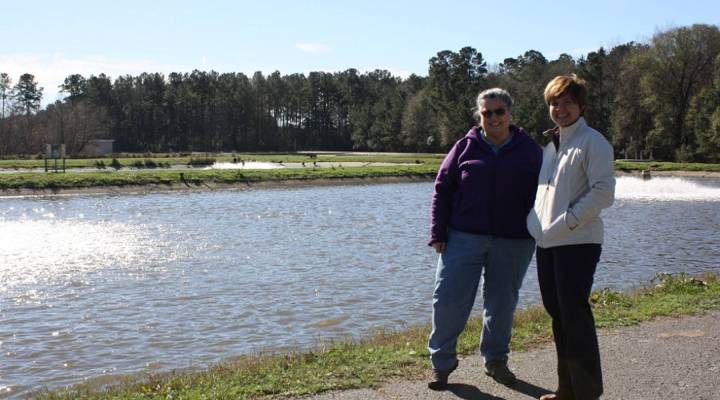
Can fixing infrastructure solve rural poverty?

When a toilet flushes in the small towns of Hampton and Varnville, S.C., the water comes to wastewater treatment plant where bacteria and microbes break it down.
The facility is an aerated lagoon system — a series of ponds that smell vaguely marshy.
“I have a lot of wildlife here,” said Cyndie Moberly, the plant manager at Lowcountry Regional. “As you can see, I have six ducks. We call them the six-pack.”
But this plant also needs some work. The ponds are supposed to be cleaned out every 10 to 15 years, but it has been more than 20 years since the last cleaning.
“You see how the plants have taken over?” Moberly asked. “That’s because there’s sludge in there. And the roots are setting in.”
But finding money to remove the sludge has been a challenge.
Then, last year, the Obama Administration designated a rural stretch of South Carolina — including Hampton County — a “Promise Zone.” In this region, almost a third of all people live in poverty. So for the next 10 years, the area will be prioritized for federal grants and loan packages.
Lowcountry Regional Water System saw an opportunity and applied for — and won — $8.3 million in grants and loans to finally clean out the ponds.
Danny Black is president and CEO of Southern Carolina Regional Development Alliance. It’s his job to lure business to rural South Carolina. He says infrastructure matters.
“If the water and sewer is not there, you may be considered for a few minutes, but that’s about it,” he said.
And with an unemployment rate of almost 13 percent, this rural county is desperate to attract industry, said Kari Foy, an engineer with Lowcountry Regional Water System.
“I think everyone in Hampton County is crossing their fingers that we’ll get a big employer,” Foy said. “Someone that can employ 300, 500 or even a thousand people — that would be huge to this county.”
Foy estimates the plant’s capacity will increase by up to 30 percent by clearing out the ponds.
So fix the infrastructure first, and hopefully, jobs will follow.
There’s a lot happening in the world. Through it all, Marketplace is here for you.
You rely on Marketplace to break down the world’s events and tell you how it affects you in a fact-based, approachable way. We rely on your financial support to keep making that possible.
Your donation today powers the independent journalism that you rely on. For just $5/month, you can help sustain Marketplace so we can keep reporting on the things that matter to you.












